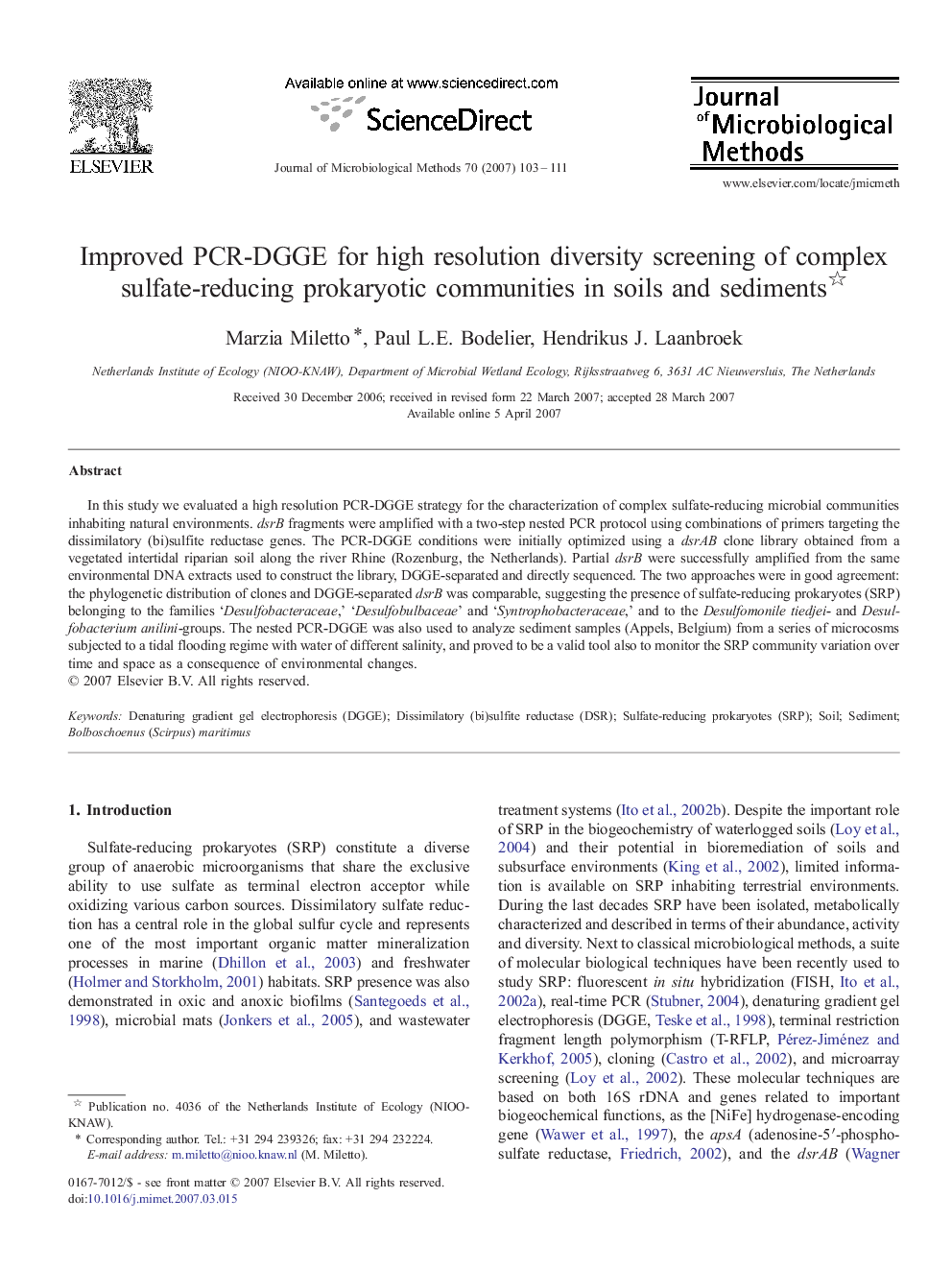| Article ID | Journal | Published Year | Pages | File Type |
|---|---|---|---|---|
| 2091768 | Journal of Microbiological Methods | 2007 | 9 Pages |
In this study we evaluated a high resolution PCR-DGGE strategy for the characterization of complex sulfate-reducing microbial communities inhabiting natural environments. dsrB fragments were amplified with a two-step nested PCR protocol using combinations of primers targeting the dissimilatory (bi)sulfite reductase genes. The PCR-DGGE conditions were initially optimized using a dsrAB clone library obtained from a vegetated intertidal riparian soil along the river Rhine (Rozenburg, the Netherlands). Partial dsrB were successfully amplified from the same environmental DNA extracts used to construct the library, DGGE-separated and directly sequenced. The two approaches were in good agreement: the phylogenetic distribution of clones and DGGE-separated dsrB was comparable, suggesting the presence of sulfate-reducing prokaryotes (SRP) belonging to the families ‘Desulfobacteraceae,' ‘Desulfobulbaceae’ and ‘Syntrophobacteraceae,' and to the Desulfomonile tiedjei- and Desulfobacterium anilini-groups. The nested PCR-DGGE was also used to analyze sediment samples (Appels, Belgium) from a series of microcosms subjected to a tidal flooding regime with water of different salinity, and proved to be a valid tool also to monitor the SRP community variation over time and space as a consequence of environmental changes.
